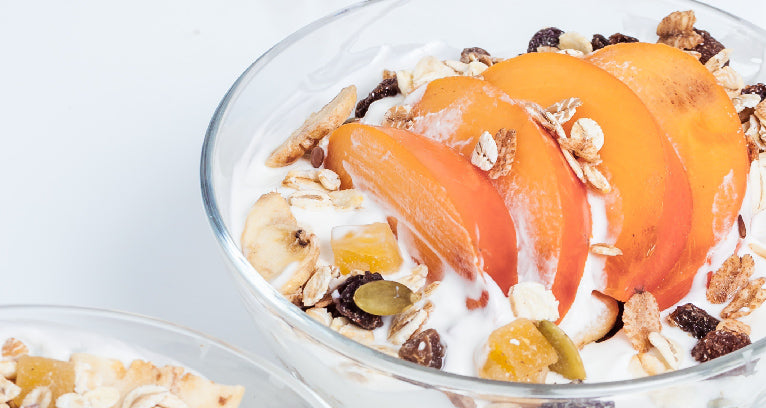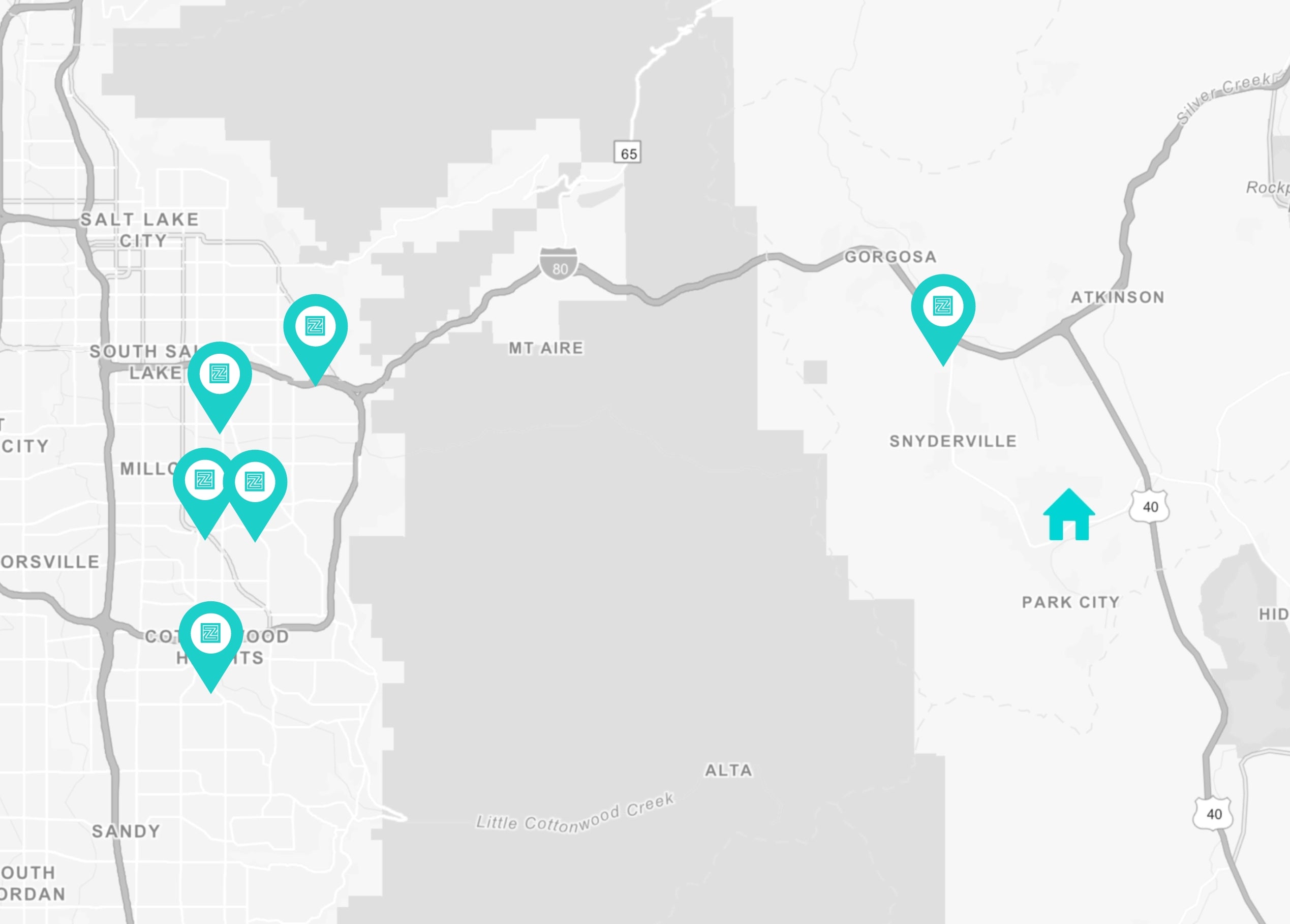
We’ve all heard it – fiber is good for you. Essentially everyone could implement more fiber in their diets, so today we’re going to talk about fiber. What does fiber do? What are good sources of fiber? How much fiber per day should be our goal?
One of the best ways to maintain a healthy colon is to eat a high fiber diet. Unfortunately, diets high in fiber faded away with the advent of “new and improved” foods: refined, artificially synthesized, soft and white, generally lacking any character (but that’s just our opinion). In other words, the fiber famine we are experiencing now is a result of decades of consuming rice that has had its brown fibrous coat removed, flour that has been bleached and had the bran removed, and the replacement of fibrous legumes like beans and lentils for greasy hamburgers and fries that contain little to no fiber.
Fiber, or roughage, is technically a food component that remains undigested as it’s processed through the gastrointestinal tract. There are primarily two categories of fiber: soluble and insoluble. Some foods contain both types, and because it readily absorbs water, fiber helps to form the bulk required to form a good ole’ bowel movement (BM).
Technically, fiber is a complex carbohydrate consisting of polysaccharides and lignins, substances that make up cell walls and give structure to the cell of a plant. Insoluble fiber has the ability to pass through the intestines intact and virtually unchanged, while soluble fiber absorbs liquids and helps make for easy expulsion.
Unlike fats, carbohydrates, and proteins, fiber does not provide the body with nutrients or fuel for energy. It usually has no caloric value. Dietary fiber is found only in plant components such as vegetables, fruits, nuts and whole grains.
Kinds of Fiber
There are seven forms of fiber (insoluble and soluble), each with its own specific function.
1. Pectin
Pectin is a soluble fiber that slows the absorption of food after meals and is recommended for anyone with hypoglycemia (low blood sugar) or diabetes because it may cause blood glucose levels to rise more gradually. Pectin also has the ability to help relieve the body of toxins and metals, support healthy blood cholesterol levels, and support heart health.
Sources of pectin include: Carrots, beets, cabbage, citrus fruits, apples, grapes, bananas, cabbage, okra and dried peas, green beans, onion skin, and sugar beet pulp.
2. Cellulose
Cellulose, an insoluble source of fiber, is a carbohydrate that is the main structural component in the outer covering of vegetables and fruits, as well as the fibrous part of the cell walls of plants. Cellulose also has the proven ability to relieve the colon of carcinogenic substances and significantly increase fecal weight. It binds up water impressively, but doesn’t dissolve in water.
Sources of cellulose include: Wheat bran, beets, peas, broccoli, carrots, lima beans, pears, apples, Brazil nuts, whole grains, and green beans.
3. Hemicellulose
Like cellulose, hemicellulose is an insoluble fiber that is not digestible and is considered a complex carbohydrate. It comprises the matrix of cell walls of plants, which are filled
with cellulose fibers. This type of cellulose is chemically broken down through the action of certain friendly bacteria in the bowel and can cause digestive discomfort individuals. This discomfort can often be relieved by taking the digestive enzyme alpha-galactosidase. Hemicellulose has a remarkable ability to retain water while not dissolving in water. It’s recommended for supporting healthy weight goals, supporting the body in the prevention of colon cancer, and for relieving the body of cancer-causing substances that can live in the bowel.
Good sources of hemicellulose include: Psyllium seeds, oat bran, apples, pears, bananas, beans, corn, cabbage, whole grains, peppers and green vegetables.
Another example of hemicellulose is psyllium seed, a hardy botanical whose seed husk is an excellent intestinal cleaner and stool softener, and it’s used in several over-the-counter laxatives.
Psyllium thickens very quickly, as anyone who has mixed up a glass of Metamucil® knows. Psyllium seeds also contain mucilage (a gel-like fiber) that swells when it comes in contact with water. For this reason, it bulks up the stool and promotes healthy BM. Mucilage can also help soothe temporarily inflammation. And the value of psyllium for keeping blood cholesterol levels health has recently been confirmed – even the American Heart Association recommends adding psyllium to our diet for its cholesterol-lowering properties.
The typical dose of psyllium is one to two rounded teaspoons in a full glass of water taken after a meal. Psyllium is safe for children and can be taken consistently with few or no side effects. Familiar laxatives that use psyllium include Metamucil®, Correctol®, and Fiberall®. Many natural health advocates recommend using natural laxatives with psyllium that do not also contain artificial colors or metals like aluminum. And be aware – many of the psyllium products sold in the United States have been diluted with rice hulls.
4. Lignin
Lignin is a non-carbohydrate cell wall material that is made up of chemical polymers and aromatic alcohols. Lignin contributes to the rigidity of plant cell walls and inhibits cell wall digestion by intestinal bacteria. Lignin has shown its ability to help support healthy blood serum cholesterol levels and to support the body in the prevention of the formation of gallstones. It’s also transformed by intestinal bacteria into a type of lignin that helps inhibit the action of estrogen, which has been linked to the development of breast cancer.
Good sources of lignin include: Flaxseed, wheat, potatoes, apples, cabbage, peaches, tomatoes, strawberries, Brazil nuts, carrots, peas, and green beans.
5. Gums
Gums are complex polysaccharides that are water soluble. Their role in plants is to repair damaged areas. Various gums and mucilages are used in fat-free foods to create that gooey,
creamy texture. Most of the gums in the following list are extruded from the stems or seeds of tropical or subtropical trees and shrubs. They can form gels in the small intestines and bind with bile acids and organic waste material.
Guar gum (guar flour) – Comes from a plant native to India. It’s tasteless, odorless and partially water soluble, meaning that it partially dissolves in water. It serves as a protective colloid, a thickener and is primarily used in very thick viscous liquids or spreadable foods.
Gum Arabic – Comes from the acacia tree (or acacia gum) and consists of a variety of sugars. It’s commonly used to maintain food product flavor and lengthen shelf life.
Flaxseed gum – Used as a substitute for Gum Arabic, this gum is used in similar applications. The whole flaxseed is sometimes added to cereals for its laxative action.
Karaya gum (Indian tragacanth) – A white, slightly acidic gum with a mild acidic odor, karaya serves as a texturizer, thickener, and food emulsifier.
Locust seed gum (carob flour) – Swells in cold water and goes clear in hot. It has a legume-like flavor and serves as a binder and thickener. It has been used as a substitute for cocoa, chocolate, and coffee.
Psyllium seed gum – Psyllium seeds are one of the best natural laxative promoters. As a gum, psyllium has a very high level of soluble dietary fiber and is added to some cereal products for this reason.
Xanthan gum – Xanthan gum is a microbial gum. It serves to form a film, has good heat resistance, and can stabilize and thicken food products.
6. Mucilages
Mucilages are routinely obtained from seed and seaweeds and are used as a thickening and stabilizing agent. They effectively hold water and can be excellent bulking agents.
Good sources of fiber: mucilages: Legumes, psyllium, guar gum.
Agar – A sweet mucilage that can remain stable in high temperatures and is often used for thickening dairy products and confections.
Alginate – Extracted from brown seaweed, it gives foods a creamy texture and inhibits the formation of ice crystals (commonly known as one of the mystery ingredients often listed on ice
cream cartons).
Carrageenan – Seaweed mucilage that is typically used to gel and emulsify certain foods.
7. Bran Fibers
The word bran refers to the fibrous covering that surrounds certain whole grains. Bran is technically referred to as cereal fiber and is the portion of the grain discarded from whole wheat as waste in modern milling processes. Bran has the ability to hold water, has excellent stool-bulking capacities, and may help to significantly reduce transit time.
Oat bran – Oat bran is made by grinding the inner husk of the whole oat grain. Over the last decade, oat bran has enjoyed a high level of publicity. Some good, some not so good. When original scientific findings on the benefits of oat bran hit the media, an oat bran frenzy exploded. While eating oat bran may not get rid of cellulite, it can help the body maintain healthy blood cholesterol levels. Study after study has confirmed that consistently eating oat bran can regulate blood serum cholesterol levels. It’s the soluble fiber found in oat bran that makes it an impressive fiber source. But remember, oatmeal (the ground version of the whole oat grain) contains about one-third less fiber than the bran.
Can You Get Too Much Fiber?
Some healthcare experts believe that eating more than 35 grams of fiber per day may adversely affect vitamin and mineral absorption. While this is technically true, rarely does anyone eat near that amount of fiber. Most of us don’t eat even the minimum amount we need. While it’s true that some fibers may absorb calcium, zinc, iron, and magnesium, and while the presence of fiber in the intestines may inhibit the absorption of certain nutrients, these effects are present only under extreme conditions. In other words, don’t let the fear of becoming nutrient deficient stop you from boosting your fiber intake. This particular phenomenon does not pose a significant threat. The marvelous benefits of fiber far outweigh the remote possibility that you will eat quantities large enough to pose any problem. So, chances are that no, you won’t eat too much fiber.
Remember to add fiber to your diet gradually, drink plenty of water, and chew your food thoroughly so that the necessary digestive enzymes will be activated in the saliva. Some people believe that taking supplemental digestive enzymes right before eating fiber can cut down on digestive discomfort, which can help soothe overall stomach discomfort.
How Much Fiber do we need?
The average American eats from 9 to 13 grams of fiber per day. A good diet should include 25 to 35 grams of dietary fiber each and every day, and two-thirds of that fiber should be insoluble.
The ideal barometer for determining if you’re getting enough fiber is whether you have a good BM at least every 24 hours. And your transit time is very important. Luckily, something as simple as adding wheat bran to your diet is the easiest way to boost your fiber intake.
Note: Make sure you’re not hypersensitive or allergic to grains and certain high fiber legumes.
An intolerance to gluten from wheat, barley or rye can result in gas, diarrhea and abdominal cramping, which can be symptoms of celiac disease, wheat allergy or gluten intolerance and result in malabsorption of nutrients.
In her book, “The Complete Fiber Fact Book,” Master Herbalist Rita Elkins lists some simple ways to consider increasing fiber intake:
- Take a good fiber supplement every morning with breakfast or 30 minutes before any meal
- Grab a handful of oat cereal when you need to snack
- Add bran, millet, barley, etc. to your meatloaves, casseroles, pancakes, cake, and cookie batters, stuffing, and compotes
- Use crunchy granola cereals or barley nuts as a topping for ice cream, yogurt, baked potatoes, fish, salads, etc. Adding whole wheat that has been soaked in water to salads is delicious
- Always add seeds or fresh raw fruit to make yogurt more fiber-acceptable, and only buy active culture yogurts
- Eat fresh, raw fruit and vegetables with their peelings whenever possible
- Reach for prunes, dates or figs when you need to appease your sweet tooth instead of cookies, candies or juice
- Look for fiber-rich foods offered in salad bars and add them liberally (broccoli, carrots, red beans, garbanzo beans, sunflower seeds, etc.)
- Get in the habit of sprouting your own legumes. Peas, lentils, mung beans, garbanzo beans, lentils, soybeans, and wheat can all be sprouted and make delicious additions to tossed green salads
- Buy canned, precooked beans of all kinds and add them to salads, soups, casseroles, and stews
- Keep a good supply of grains on hand that you can add to any recipe to make it more fibrous.
- Good grains include millet, barley, brown rice, whole oats and whole wheat.
Faulty Fiber Sources
Several misconceptions exist about certain foods that are thought to be high in fiber. One of the most common is that if you eat a lot of lettuce-type salads, you’re getting plenty of fiber. Lettuce, tomatoes and even celery are not good fiber sources. They are, in fact, much lower in fiber than legumes and whole grains. So while these veggies provide some fiber, by themselves they are an insufficient source. Another misconception is that a food is high in fiber just because the label says wheat, wheat berry, multigrain, natural, fortified, etc. None of these terms means the whole grain has been used. In fact, many products labeled with such terms are mostly comprised of white flour. Even the term “whole wheat” doesn’t necessarily mean that all of the flour used has been milled from the whole grain.
Watch out for high-fat baked goods that are disguised as fiber-rich foods. Oat bran doughnuts, cookies or even tortilla chips are commonly high in fat and sugar and notoriously low in oat bran.
Final Thoughts on Fiber
The benefits of a high-fiber diet include normalized BM, supported bowel health, healthy cholesterol levels, healthy blood sugar levels, and support for healthy weight goals.
Ultimately, look for whole-grain products, fruits, veggies, beans, peas, legumes, as well as nuts or seeds if you’re hoping to include more fiber-rich foods in your diet.



